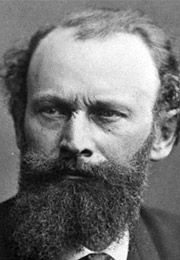Widely hailed as a pivotal figure in modern art, Édouard Manet (1832–1883) presented a new vision of modern Parisian life in his paintings, paving the way for many of the developments of Impressionism. Manet’s paintings focused on life in the city that was undergoing dramatic physical and social transformations during the eras of the Second Empire and the Third Republic. At the same time, he offered a radical new formal approach to painting, eliminating traditional notions of academic modeling and bringing attention to the materiality of paint itself.
Manet came from an upper-class family; his wealth freed him from the necessity of earning a living and allowed him to pursue an artistic career. He studied with Thomas Couture from 1850 to 1856, but he would soon abandon many of the academic precepts he learned in Couture’s studio. Manet’s paintings, although mostly contemporary in subject, integrate references, in terms of technique and composition, to the Old Masters whom he closely studied at museums across Europe, including Flemish, Dutch, Spanish, and Italian schools of painting. The collision of the modern with Old Master references was highlighted in controversial paintings such as Déjeuner sur l’herbe (1863), which placed bourgeois libertines in the role of river gods, derived from a composition by Raphael, and Olympia (1863), which cast a modern courtesan in the role of Titian’s Venus of Urbino.
Although he never exhibited with the group, Manet was a friend to many of the Impressionists, including Claude Monet, Edgar Degas, and Pierre-Auguste Renoir. Those artists were in no small part influenced by Manet’s focus on depicting modern life, and he was in turn encouraged by his association with them to experiment with a brighter palette and looser handling of paint. Portraits were among his central subjects, and he deftly captured the social cues apparent through the fashion and deportment of each individual, as in Young Woman in a Round Hat. In his astute attention to the particular character of his time, Manet has been seen as an exemplar of Baudelaire’s idea of the “heroism of modern life.”



